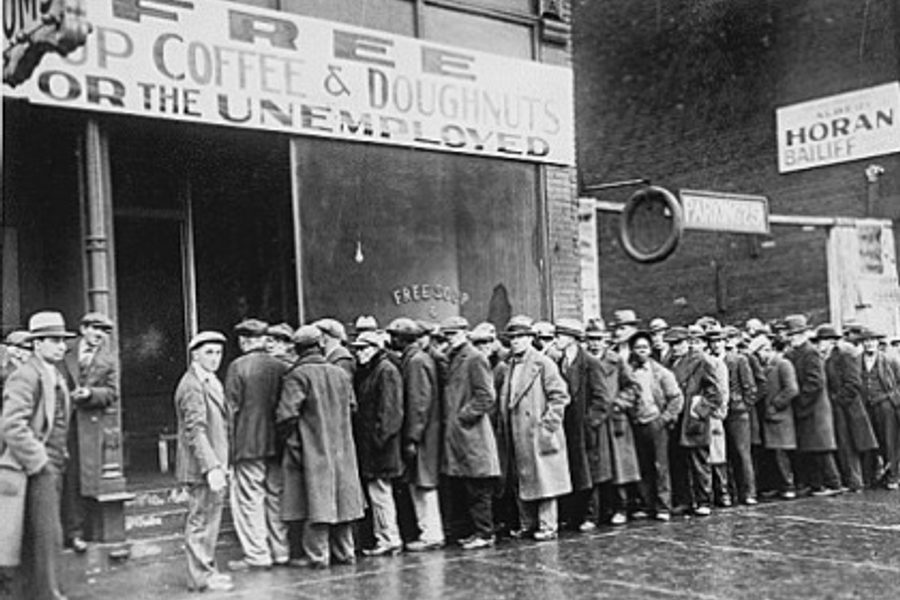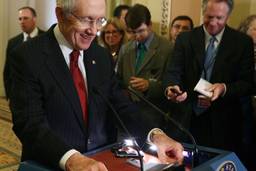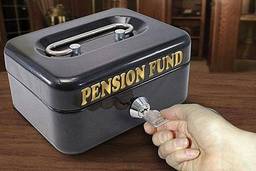
On Friday, January 6, the U.S. Labor Department once again released its figures for the December jobs situation. Once again, after a crescendo of hype build up in the business press that the forthcoming numbers would show a clear recovery in the jobs market, the numbers ‘disappointed’.
The Labor Department’s ‘Current Establishment Survey’ (CES), based on reporting of job hiring and layoffs by more than 400,000 U.S. companies, showed only 103,000 jobs added in December. For net job growth in the economy, a minimum of 150,000 jobs needs to be added each month. So the trend continues toward job loss despite the media hype.
But wait a minute, those who argue the economy and jobs market is in recovery say, another Labor Department survey, the ‘Current Population Survey’ (CPS) shows that jobs grew by 297,000 in December and the unemployment rate fell from 9.8% to 9.4%. Doesn’t that show a turnaround?
Sifting through the surveys
To understand the contradiction between these two surveys, it is necessary to understand how they are put together and the dubious assumptions they make, especially in the case of the CPS that determines the reported unemployment rate (the CES only shows the actual number of jobs gained or lost).
First, unlike the CES, which is a ‘report’ by businesses directly to the Labor Department on how many jobs they added or reduced, the CPS is obtained by 50−60,000 phone interviews of households each month. The unemployment rate is obtained by these interviews.
However, the CPS method is not very reliable. Here are several reasons why.
To be considered ‘officially unemployed,’ the interviewee must indicate he or she is out of work but has looked for work sometime in the previous four weeks. This official unemployment rate — called the ‘U-3’ rate — in December was 9.4%, based on a total of 14.5 million officially unemployed. It’s what the press reports and is an extreme underestimation of the number of jobless.
If you haven’t ‘actively looked in the previous four weeks,’ you are not considered unemployed. You may be just as jobless as anyone else, may want to work as much as anyone else, and maybe would accept a job if offered, but you are not considered unemployed by the Labor Department. You are instead called ‘marginally attached.’ So the fact that you don’t have a job doesn’t mean you’re unemployed, according to the government. There are officially about 2.6 million of ‘marginally attached’ workers. But the number is actually much higher, around 4 million. Adding these 4 million to the 14.5 million equals what is called the U-5 unemployment rate. That figure doesn’t get reported by the press. But there’s more.
Another major problem with the CPS is that the interviewee on the phone is asked how many hours she or he worked in the previous week. If the answer is even one hour, you are deemed employed. There were 8.9 million of these workers, up from only 2 million when the current recession began back in 2007. When added to the U-3 and U-5, their numbers give us the ‘U-6’ unemployment rate, which is also almost always ignored by the media reporting on the jobless situation. So now we have 14.5 million, plus 4 million plus 4 million more, or about 22.5 million.
But this is still not the entire picture. The household phone survey approach by the CPS is strongly biased against workers who don’t have phones to participate in the surveys, or who can’t be reached by phone, or who otherwise are reluctant to participate in phone interviews with the US government. For example, there are about 8-10 million undocumented workers in the US. They have undoubtedly been impacted worse than the majority of workers in terms of suffering from unemployment. They do not participate in the phone survey. There are additionally millions more US workers who are itinerant and travel for jobs on a regular basis. They are not adequately sampled in the phone survey either because they don’t have a permanent residence to be called. And there are millions of inner city youth ‘working off the books,’ as they say, who neither receive calls nor would answer if they did. They are a big part of the underground economy in the US that makes up about an unreported 10% of annual $14 trillion output in the US. We’re talking about tens of millions of workers who are disproportionately jobless in recessions compared to the rest but who are not counted in the total jobless or unemployment rate.
And then there’s the growing ranks of jobless who have been signing up for long term disability benefits in order to avoid the paltry unemployment benefits or their continued uncertainty. That number has grown by at least a million, to 3 million, since the recession began.
So the total number of unemployed in the United States is really around 27 million — not the official 14.5 million reported in the highly conservative U-3 unemployment rate of the CPS and not even the 22.5 million in the Labor Department’s often unmentioned U-6 rate.
The dangers of sticky statistics
But even the U-3 (and U-6) total unemployed rate is grossly underestimated. These rates are “statistics.” That is, not true numbers, but data upon which statistical manipulations have been performed. And that means a lot of leeway for manipulating the true numbers. One of the grossest manipulations of the numbers is the result of what is called the ‘New Business Birth Death Model’ (NBDM).
This is an assumption of how many new businesses are formed each month and the number of new employees hired as a result of that new business formation. It is not a true record of formations, but an assumption of what is happening based on historical averages. If in the past ten years businesses started up 200,000 new businesses every December, then at least 200,000 new jobs are assumed to be added to the labor force. So if the actual CPS survey of households estimates 100,000 actual job losses that month, then the NBDM assumed growth of 200,000 will mean a net increase of 100,000 jobs — not a truer loss of 100,000 jobs.
This game goes on regularly with the NBDM every month. It is why in the spring the job numbers always are falsely inflated. Last spring, for example, it was assumed that 225,000 new jobs were added in April and May due solely to the assumptions of the NBDM.
The CPS survey of the official tally of jobless, and the official unemployment rate, is thus rife with these kinds of statistical games. It should therefore be taken with a grain of salt.
Unearthing the real story on unemployment
It is important to look to other indicators of the health of the job market every month. Such as new jobless claims (still consistently over 400,000 a month, which means jobs are continuing to disappear). Such as how many of the 1 million private sector jobs allegedly created in 2010 were merely low paid, no benefit, part-time and temporary jobs (of which about two-thirds of the 1 million were). Such as how many workers have been jobless long term and how long (now at record levels and still rising). Such as how many job openings there are in relation to how many workers looking for work (still at a record of roughly 5 workers looking for every job available). Such as the ratio of the number of jobs to the total population (now at its lowest since 1945).
And: How long is it estimated it will take just to get back the jobs that were lost since 2007. This is perhaps one of the best true indicators of the depth of the current jobs crisis.
Even if a net of 250,000 jobs were added every month (not the current 103,000), it would take about six years to recover the jobs lost, assuming the conservative U-3 level of 14.5 million. Assuming the more accurate U-6 level of 22.5 million jobless, it would take twice that, with jobs not fully recovered from 2007 levels until 2022. And if a more realistic ‘U-9’ rate (a rate that doesn’t exist yet) were the measure, not until after 2025. That’s how deep and serious the current unemployment situation truly is today.
And that’s why a massive direct government job creation program will be necessary at some point soon to correct the worst jobs crisis since 1934. Private companies today sit on $2 trillion in cash and aren’t investing (in the U.S. at least) to create jobs. And the Obama government just agreed to give them hundreds of billions more in the Bush tax cuts extension. Now they can hoard $2.2 trillion and not create jobs. And the newly unified corporate-political elite are about to cut spending and layoff millions more in the public sector, instead of hiring more.
But today’s desperate need for a massive government direct job creation program is another story, for another time.
Jack Rasmus is author of the 2010 book EPIC RECESSION: PRELUDE TO GLOBAL DEPRESSION (Pluto Press-Palgrave Macmillan), and the forthcoming 2011 book, OBAMA’s ECONOMY: WHY RECOVERY FAILED. WHAT’S NEXT?







